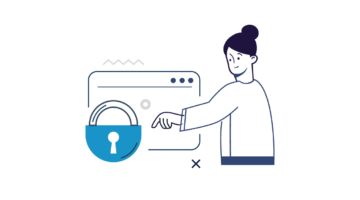Internal Controls: Are You Ready to Take Control?
The information that is coming to you from within the business must be timely, accurate, and reliable. Internal controls are an integral part of that, as well as being part of the operations that can help mitigate risks and add business value.
What are Internal Controls?
Internal controls are the mechanisms, rules, and procedures implemented by a company to ensure the integrity of financial and accounting information, promote accountability, and prevent fraud. There must be formal documentation of the company’s internal controls. They are put into place by a company’s board of directors, management, and other personnel, designed to provide assurance.
Internal controls are a key business function for every company, and if not, they should be. The Sarbanes-Oxley Act of 2002 seeks to protect investors from fraudulent accounting activities and improve the accuracy and reliability of corporate disclosures, which has had a tremendous effect and makes managers responsible for financial reporting and creates a audit trail. If a manager is found guilty of not establishing internal controls, there is criminal charges at risk. As part of a audit, external auditor’s will test accounting processes and internal controls to show their effectiveness.
What is the Importance of Internal Controls?
Internal controls are established to further strengthen:
- The reliability and integrity of information
- Compliance with policies, plans, procedures, laws, and regulations
- The safeguarding of assets
- The economical and efficient use of resources
- Promote accountability
- Improve accuracy and timeliness of financial reporting
Approximately 47% of companies say that limited time and resources are the most significant barriers to performing a risk assessment or implementing internal controls, and 40% of private companies say that they have either designed internal controls that are not clearly documented, or not designed any at all.
Internal Control Structure
The structure is derived from the way management runs an operation and how that is integrated with the management process. The structure consists of 5 components:
- Control Environment: The control environment sets the tone of the company. It includes the integrity, ethical values and competence of the company’s people, management’s philosophy and operating style, the way that authority and responsibility is assigned, and the direction provided.
- Risk Assessment: After objectives are set, the risks from external and internal sources should be assessed. The risk associated with each objective allows the management to develop a way to control these risks such as monthly meetings to discuss risk issues and internal audit risk assessment.
- Control Activities: Control activities are the policies and procedures that help ensure the management directives are carried out. Examples are procedures to protect the assets through segregation of employee duties.
- Information and Communication: Important information relevant to decision making must be collected and reported in a timely manner. This is important to achieve the company’s goals. Employees should know
- Monitoring: After the structure is in place, the company will need to monitor the effectiveness of in case there needs to be changes made. The way to test the internal control structure will be to see how companies base the thoroughness of the risk assigned to the specific components of the plan.
What Are The Two Types of Internal Controls?
- Preventative Controls: These controls defer or stop an unwanted outcome before it happens. This can be passwords, approvals, policies, and procedures.
- Detective Controls: This type of controls discovers errors and irregularities that have already occurred. This can mean reconciliations, monitoring of expenses versus the budget, and forecasts.
How We Can Help
NOW CFOs consultants have extensive expertise in identifying opportunities and implementing controls in your company. This experience ranges from fraudulent activities, operational inefficiencies, and not adhering to company policies.
Internal controls can be implemented for public reporting, or private safeguarding. Our consultants have years of experience with Sarbanes-Oxley Section 404 audits and will make sure there are procedures in place for your company structure.
Get Your Free Consultation
Gain Financial Visibility Into Your Business
We provide outsourced, fractional, and temporary CFO, Controller, and operational Accounting services that suit the needs of your business.
- Hourly Rates
- No Hidden Fees
- No Long Term Requirements
NOW CFO provides the highest level of expertise in finance and operational accounting to accelerate results and achieve strategic objectives for sustainable growth and success.
After completing the form, a NOW CFO Account Executive will reach out and learn more about your needs so that we can pair you with the right Partner.



